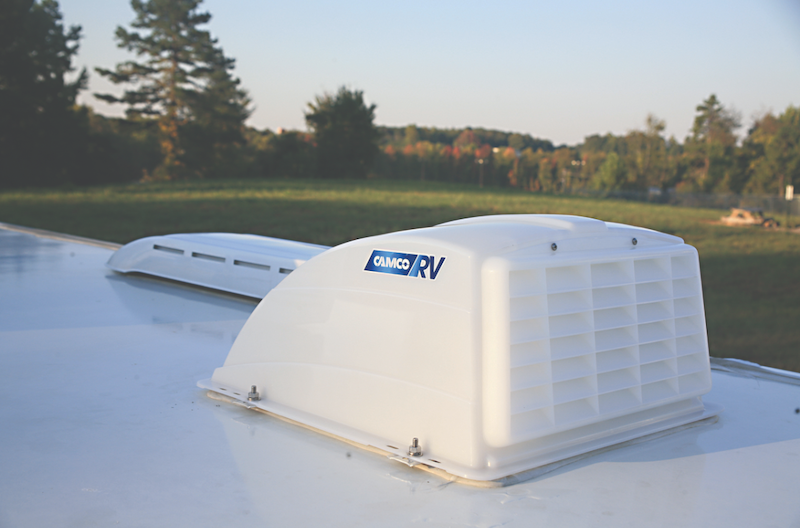RV Vent Replacement: Do-It-Yourself Step-by-Step Guide
The importance of maintaining all aspects of your RV, even something as seemingly small as the vent covers. Vent covers play an essential role in protecting your RV from the elements while allowing fresh air to circulate. In this guide, you’ll learn everything you need to know about RV vent replacement, and get the expert tips and tricks.
Introduction to Vent Cover Replacement for Your RV
Vent covers are essential for every RV owner. They provide ventilation for your RV while keeping out unwanted elements such as rain, snow, and dust. Over time, vent covers can become damaged or worn, and they need to be replaced. A damaged vent cover can cause leaks, which can lead to serious damage to your RV’s interior.
Types of Vents and Vent Covers for RVs
There are several types of vents and vent covers available for RVs: roof vents, hood fans, and floor vents. Each of these vents will requires a different type of vent cover.
A roof vent is the most common type of vent found on RVs. They are located on the roof of your RV and are used to provide ventilation in your living space. Roof vents come in different shapes and sizes, and there are different types of vent covers available for each type of roof vent as well.
Hood fans are another type of vent you’ll find in an RV. They are located in the kitchen area and are used to remove smoke and cooking odors.
Floor vents are located on the floor of your RV and are used to provide heat and air conditioning to your living space. These vents require vent covers that can be easily removed to allow for cleaning.
Signs That You Need to Replace Your Vent Cover
There are several signs that you need to replace your vent cover. The most common sign is damage to the vent cover itself. If you notice cracks, chips, or other damage to your vent cover, it’s time to replace it.
Another sign that you need to replace your vent cover is if you notice water damage to your RV’s interior. A damaged vent cover can allow water to leak into your RV, causing damage to the walls and ceiling.
If you notice that your RV is not as well-ventilated as it used to be, it may be time to replace your vent cover. A damaged vent cover can restrict airflow, making it harder for fresh air to circulate in your RV.
Choosing the Right Vent Cover for Your RV
Choosing the right vent cover for your RV is essential. There are several factors to consider when choosing a vent cover, including the type of vent, the size of the vent, and the material of the vent cover.
Choosing the material is more important than you might think Most vent covers are made from plastic or metal. Plastic vent covers are the most common and are generally more affordable than metal vent covers. However, metal vent covers are more durable and can withstand harsh weather conditions.
How to Measure Your Vent for a Replacement Cover
First things first, you’ll need to measure your vent. Measuring your vent for a replacement cover is a simple task. First, remove the old vent cover from your RV. Next, measure the length and width of the vent opening. Make sure to measure the opening itself, not the old vent cover.
Once you have your measurements, you can start looking for a replacement vent cover. Make sure to choose a vent cover that is the same size as your vent opening.
Tools and Materials Needed for Vent Cover Replacement
Replacing your vent cover can be a simple task if you know what you’re doing. You’ll need a few tools and materials, including:
- Screwdriver
- Drill
- Vent cover
- Screws
- Sealant
Make sure to have all of these tools and materials on hand before starting the replacement process.
Step-by-Step Guide for Replacing Your RV Vent Cover
Replacing your RV vent cover is a simple process that can be completed in just a few steps:
- Remove the old vent cover from your RV by unscrewing the screws that hold it in place.
- Clean the area around the vent opening.
- Place the new vent cover over the vent opening.
- Secure the new vent cover in place with screws.
- Apply sealant around the edges of the vent cover to prevent leaks.
Tips and Tricks for Maintaining Your RV Vent Covers
Maintaining your RV vent covers is essential to ensure that they last for as long as possible. Here are some tips and tricks for maintaining your RV vent covers:
- Clean your vent covers regularly to prevent dirt and debris from building up.
- Inspect your vent covers regularly for signs of damage.
- Apply a UV protectant to your vent covers to prevent them from fading and cracking.
- Use a vent cover with a bug screen to prevent insects from entering your RV.
Common Problems with RV Vents and How to Troubleshoot Them
RV vents can experience several common problems that can affect their performance. The most common problems include leaks, restricted airflow, and damage to the vent cover.
If you notice that your RV vent is leaking, it may be due to a damaged vent cover. Replace the vent cover to prevent further leaks.
If you notice that your RV is not as well-ventilated as it used to be, it may be due to a restricted airflow. Clean the vent cover and surrounding area to improve airflow.
If you notice signs of damage to the vent cover, it’s time to replace it. A damaged vent cover can cause leaks and restrict airflow.
Final Thoughts on Vent Cover Replacement for Your RV
Replacing your RV vent cover is a simple process that can help protect your RV from the elements. By following the steps outlined in this guide, you can replace your vent cover like a pro and keep your RV well-ventilated and protected.
Remember to choose the right vent cover for your RV, measure your vent correctly, and use the right tools and materials. With these tips and tricks, you can maintain your RV vent covers and troubleshoot any common problems that may arise.
Now that you know everything about vent cover replacement for your RV, it’s time to get started. Happy RVing!
Learn More About Boondockers Welcome
We promise not to spam you!




